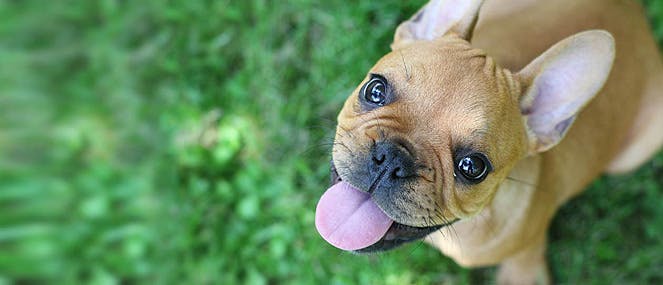
- A Guide To Perfect Your Pet's Health/
- Tips and Resources for Cleaning Your Dog's Ears/
- How To Spot If Your Dog Has An Ear Infection


Ears are a common cause of ill health for your pooch – they provide a warm, moist environment for bacteria and infections to grow, dirt to linger and pests to hide out in. And dogs with hairier or floppier ears, or those with narrowed ear canals can be even more prone to issues.
The good news is, they can be easy to prevent, spot and treat. Rule one is to make checking their ears a daily habit. This will ensure you spot any signs or symptoms early, potentially preventing more serious infections that may require more intensive and prolonged treatment.
How can you tell if your dog has an ear infection?
Signs of ear infections in dogs include:
- Unpleasant odour
- Redness
- Swelling
- Signs of pain or discomfort when they are touched
- Excessive discharge
- Shaking or scratching at their ear, or hanging their head low to one side.
How do dog ear infections happen?
The inside of your dog’s ear tapers down into a long, narrow tube, or ear canal, which extends into the base of their skull, where their ear drum is found. The canal produces wax, which works its way up the canal and removes debris as it goes.
This canal can become inflamed, and the canal will thicken and produce excess wax. Bacteria and yeast can then flourish, causing more inflammation – and usually pain, discomfort and the ear may even start to smell or ‘weep’. This is when your dog may also start to rub at their ear or shake their head to alleviate the discomfort and/or itch.
What are common causes of dog ear infections?
- Allergies – allergies are the most common cause of ear infections. Ear canals will become inflamed – which in turn creates excessive wax build up.
- Grass seeds – especially prevalent in summer and spring, these can migrate down the canal and cause serious irritation. Caught quickly, your vet can usually remove them under a quick sedation.
- Ear mites - these are easily passed between dogs and can often be spotted moving in the ear. Again, they are usually easily treated.
- Bacteria and yeast – bacteria and yeast are the most common causes of dog ear infections. They are usually secondary to inflammation in the ear. This type of canine ear infection requires medication from your vet for effective treatment.
- Water – if you have a water loving dog, they may get a build up of moisture in the ear canal. Ensure their ears are well dried after a splash, and check their ears more regularly for offensive smells, redness or discharge.
- Hereditary problems -dogs with extra-long, floppy ears are predisposed to ear infections as the covered ear canals can become abnormally warm and humid – as mentioned earlier, this provides the perfect conditions for bacterial and yeast infections to flourish. Some breeds are prone to ear infections due to excessively narrow ear canals, while other breeds have hairy canals.
Treating dog ear infections
While it’s tempting to treat your dog’s ear infection using a home remedy, if you notice any changes in your dog’s ear, ensure you see a vet promptly as ear infections nearly always require specific medication in order to successfully treat them.
Depending on how severe the infection is, your vet may need to put your pet under general anaesthetic to remove the cause of the irritation (e.g. in the case of a grass seed) and thoroughly clean the ear.
Your vet will need to recheck the ear/s, and this is very important – they may require further treatment and/or repeat cleaning. If left to redevelop, your pooch could find themselves with a highly resistant infection that is difficult to treat.
Preventing ear infections in dogs
Daily checking of your pooch’s ears is a helpful habit, as you’ll quickly notice any changes or obvious signs of infection. The regular use of a gentle dog ear cleaner that nurtures the ear canal and removes excess wax and debris is also recommended as a means of preventing infections – this can be done once a week in infection prone dogs.
Also ensure you’re cleaning your dog’s ears properly. Watch our video showing how to clean your dogs’ ears.
Related product:
-
PAW Gentle Ear Cleaner
A natural, gentle ear cleaner that cleans without irritation.




